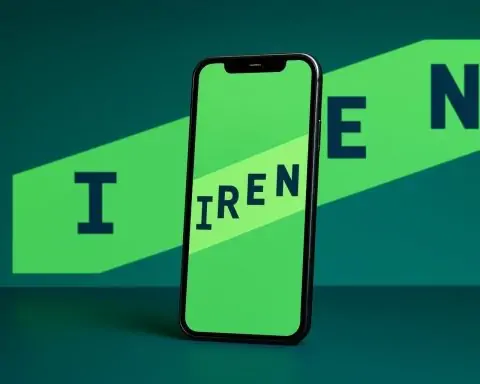- Yemen’s bandwidth is dominated by a single aging subsea cable, the FALCON/FLAG system, landing at the Red Sea port of Hodeidah, with only a narrow backup via Djibouti and some satellite links.
- During the civil war, land fiber links to Saudi Arabia were destroyed, leaving Yemen largely dependent on undersea cables.
- AdenNet was launched in mid-2018 by the internationally recognized government in Aden to provide fiber to institutions and 4G LTE to consumers, independently of Sana’a’s infrastructure and with tens of thousands of subscribers.
- There are four mobile operators—YOU (Yemeni Omani United, formerly MTN Yemen), Sabafon, Yemen Mobile, and Y Telecom—of which Yemen Mobile is state-owned, and by 2023 about 56.7% of the population had 4G coverage, with no 5G as of 2024.
- As of January 2024, internet penetration was about 17.7% of Yemen’s population (roughly 6.16 million of ~34.8 million people), with rural and marginalized groups far less connected.
- A landmark outage occurred in January 2020 when the FALCON subsea cable was damaged by a ship’s anchor, leaving most of Yemen offline for weeks, and in January 2022 a Saudi-led airstrike hit the telecom center in Hodeidah causing a nationwide outage for about four days.
- Starlink entered Yemen with a pilot in Aden in early 2023 and an official launch in September 2024, with the government signing a deal to operate Starlink in government-held areas and speeds rising from 10–12 Mbps to over 140 Mbps in the Aden trial.
- As of May 2023, Yemen had the slowest mobile data speeds in the world at 3.98 Mbps, and by early 2025 mean fixed download speeds were around 10 Mbps, ranking 145th out of 152 countries.
- Only about 1% of Yemenis have fixed broadband subscriptions, while most rely on mobile data or informal neighborhood networks, with connectivity concentrated in Sana’a and Aden and a large rural-urban divide.
- Internet freedom is rated Not Free, with the Houthis blocking websites and intermittently shutting down networks, including a December 2017 national outage for about 30 minutes and a September 2023 block of Zoom, Google Meet, and Signal.
Infrastructure and Major Service Providers
Yemen’s internet infrastructure is limited and highly centralized. The backbone relies on a few aging international connections and an outdated domestic network. A single subsea cable – the FALCON/FLAG system landing at the Red Sea port of Hodeidah – carries most of Yemen’s bandwidth [1] [2]. In fact, almost all connectivity comes through this one aging cable, with only a narrow backup link via Djibouti and some expensive satellite links [3]. During the civil war, land fiber links to Saudi Arabia were destroyed, leaving the country largely dependent on undersea cables [4]. Internal infrastructure consists of microwave relays and limited fiber, with fixed-line broadband largely delivered via old DSL over copper telephone lines [5]. This network has not seen significant upgrades during the conflict, resulting in very low bandwidth and reliability [6].
Major service providers in Yemen include:
- YemenNet (PTC) – the state-run ISP operated by the Public Telecommunications Corporation in Sana’a. It was the sole provider of internet services nationwide until the war and remains the primary carrier under Houthi control [7]. YemenNet offers DSL and other internet services but with slow speeds and high prices due to outdated infrastructure [8].
- TeleYemen – historically the exclusive provider of international telecom for Yemen (handling international calls, internet gateways, etc.). TeleYemen is now also under Houthi de facto control and is effectively the sole provider of landline, mobile, and satellite internet services in Houthi-held areas [9].
- AdenNet – a new government-run ISP launched in mid-2018 by the internationally recognized government in Aden to break the monopoly. Backed by Saudi/UAE funding, AdenNet provides fiber-optic broadband to institutions and 4G LTE wireless internet to consumers in government-controlled areas [10] [11]. Its network is independent of the Houthi-held Sana’a infrastructure (reportedly drawing connectivity via Saudi Arabia instead of the Hodeidah cables) [12]. However, AdenNet’s coverage is still limited (on the order of only tens of thousands of subscribers) [13].
- Mobile Operators – Yemen has four mobile telecom operators: YOU (Yemeni Omani United, formerly MTN Yemen), Sabafon, Yemen Mobile, and Y Telecom [14]. These companies provide GSM/CDMA mobile phone service and mobile internet. Yemen Mobile is state-owned (and uses CDMA/EVDO technology plus some LTE), while YOU (formerly MTN) was sold to a private/Omani investor and offers GSM/LTE, and Sabafon and Y Telecom are privately owned. Mobile networks cover major cities and much of the population, but coverage and capacity have been reduced by conflict. Mobile data is a crucial way many Yemenis get online, given the lack of fixed broadband in most areas.
International connectivity is a bottleneck. Besides the main FALCON undersea cable, Yemen has a couple of satellite earth stations (Intelsat/Intersputnik/Arabsat) and had microwave links to Saudi Arabia and Djibouti [15]. But due to war damage and lack of upgrades, the country’s bandwidth supply is very constrained, leading to slow speeds and frequent outages [16]. For example, when the FALCON cable was cut by a ship’s anchor in January 2020, over 80% of Yemen’s internet capacity went down, causing a nationwide outage that lasted weeks until repairs were completed [17] [18]. Redundancy is limited – an outage or attack on the Hodeidah landing can effectively disconnect most of the country.
Government Regulations, Policies, and Censorship
Internet and telecommunications are heavily influenced by Yemen’s political fragmentation. In Houthi-controlled areas (including the capital Sana’a), the de facto authorities tightly control the state-run networks and impose strict censorship. The Houthi-run YemenNet has a history of blocking websites and social media deemed critical of the Houthis. Since the Houthi takeover of Sana’a in 2015, at least a dozen news websites not aligned with the Houthi movement have been consistently blocked on Yemen’s internet [19]. Platforms like Facebook, Twitter, Telegram and various news sites have been intermittently filtered or shut down – for instance, YemenNet cut access to social media and news in late 2017 during a military flare-up [20], and in September 2023 it blocked Zoom, Google Meet, and Signal to disrupt planned anti-Houthi demonstrations [21]. Houthi authorities have even completely shut off the internet on occasion; in one case in December 2017 they turned off internet access for the entire country for about 30 minutes, apparently to suppress the spread of videos of Houthi abuses [22]. These acts are part of a broader pattern of censorship and information control that has intensified with the conflict [23]. Freedom of expression online is severely restricted in Houthi areas, and users fear surveillance – the Houthi-run telecom infrastructure allows for potential monitoring of internet traffic in Sana’a, and residents are highly wary of snooping by authorities [24].
By contrast, the internationally recognized government claims to follow a more open policy in areas it administers, although its reach is limited. When AdenNet was launched, officials promised it would uphold internet freedom and only block pornography or content violating cultural norms [25]. However, observers have raised concerns since AdenNet is supported by Saudi Arabia and the UAE – countries known for extensive web blocking – which could influence its practices [26]. Overall, Yemen lacks robust legal protections for online speech. There have been reports of arrests and harassment of bloggers and activists in both Houthi and government areas, and both sides of the conflict view control of the internet as a strategic asset. The regulatory environment is essentially defined by the conflict: each side operates its telecom sector as a monopoly, and licensing of new providers or technologies is politicized. For example, until 2018 no competing ISP could operate, and even now YemenNet (under Houthi control) and AdenNet (government) each hold sway in their territories. This state (and de facto state) control means policies can change with political conditions – such as shutting down networks for “maintenance” as a pretext for censorship or security moves [27] [28].
Accessibility, Penetration Rates, and the Digital Divide
Internet accessibility in Yemen is among the lowest in the world. Only a small fraction of Yemenis are online, and those who are face high costs and poor service. As of January 2024, internet penetration was estimated at 17.7% of the population (about 6.16 million users out of ~34.8 million people) [29]. This means over 80% of Yemenis remain offline, a staggering digital divide. (For comparison, the global average internet penetration is around 65–72%, and even many developing countries have well over half their population online [30].) Earlier estimates in 2023 had put Yemeni internet use a bit higher (~27% [31]), but in any case, well under one-third of Yemen’s people have internet access, the lowest rate in the Middle East. Those living in rural and conflict-affected areas, and marginalized groups like the poor and women, have even less access, exacerbating socio-economic disparities.
A major barrier is affordability and infrastructure availability. Yemen’s internet is not only sparse but extremely expensive relative to incomes. One analysis found that a fixed broadband package in Yemen costs around $2,466 per month, which is 30 times the average monthly income – making it essentially unaffordable for the vast majority of citizens [32]. Even if one could pay, the quality is very low: $1 of internet in Yemen buys far less bandwidth than anywhere else. In fact, on a cost-per-speed basis, Yemen has the most expensive internet in the world, with an estimated cost of $3,768 per Mbps, highlighting how prohibitive it is for ordinary users [33]. High poverty rates (worsened by the war) mean few can spare money for internet service, especially in rural areas. The lack of electricity and equipment (many cannot afford computers or smartphones) further limits access [34]. Unsurprisingly, internet use is concentrated in urban centers like Sana’a and Aden among those who can afford devices and subscriptions, while millions in rural villages have never been online.
There is also a divide in type of access. Because the fixed-line network is so underdeveloped, the vast majority of internet users rely on mobile networks or shared connections. It’s estimated that only around 1% of Yemenis have a fixed broadband subscription at home (a connection faster than 256 kbps) [35]. Most people who do use the internet are connecting via mobile data or community networks. In some remote areas, enterprising locals have set up neighborhood Wi-Fi networks by extending connections from YemenNet via long-range antennas [36]. These informal ISPs resell connectivity to villages that the main providers’ cables or DSL lines do not reach. While this helps extend access, it’s often slow and subject to the same high costs (since the bandwidth ultimately comes from YemenNet’s expensive supply) [37]. The digital divide is also evident in education and gender – many schools lack internet, and women (especially in conservative rural areas) have lower digital access due to social and economic factors (though exact figures are hard to come by). In summary, Yemen’s internet penetration is not only low overall, but deeply unequal: connectivity is a luxuryavailable primarily to urban, relatively better-off Yemenis, creating a significant gap between the connected few and the offline majority.
Impact of Conflict on Internet Connectivity
Yemen’s ongoing conflict since 2015 has severely impacted internet connectivity. The war has turned telecommunication infrastructure into both a target and a tool, leading to frequent outages, damage to infrastructure, and deliberate shutdowns. All parties to the conflict have at times “weaponized” the internet – either by physically attacking network facilities or by cutting off access for strategic gain [38] [39].
One major impact has been physical damage to critical infrastructure. In January 2022, a Saudi-led coalition airstrike hit the telecom center in Hodeidah – the landing point for the undersea cable – causing a nationwide internet blackout that lasted about four days [40]. This outage disrupted everything from banking and remittances to news and education, highlighting the country’s dependence on a single hub [41]. The strike was ostensibly targeting Houthi military capabilities, but it knocked out Yemen’s primary internet gateway [42]. Earlier in the war, in July 2018, Houthi forces themselves severed a fiber-optic cable in Hodeidah while digging fortifications, cutting off around 80% of Yemen’s internet access in the process [43]. That incident, too, caused a major outage and was part of the struggle for control over Hodeidah. The Houthis also sabotaged land cables that ran to Saudi Arabia early in the conflict, eliminating important redundancy [44]. And as noted, in January 2020 a non-military event – a ship’s anchor – damaged the FALCON subsea cable (already strained by lack of backups), leaving most of Yemen offline for weeks [45]. These examples show how fragile Yemen’s connectivity is in a war zone: a single attack or accident can plunge the entire nation into an information blackout.
Beyond physical destruction, deliberate internet shutdowns have become a tactic in the conflict. The Houthi-controlled authorities have repeatedly shut down internet access in their territory during sensitive moments. For instance, in November 2023, the internet in Houthi-held Yemen was turned off for several hours, officially blamed on “maintenance” but widely believed to be an attempt to control information amid regional tensions (the Houthis had launched strikes related to the Israel-Gaza war) [46] [47]. Yemen actually recorded the highest number of internet shutdown incidents in the Middle East in 2019, as authorities used outages to quell unrest or silence news [48]. In just the first quarter of 2023, there were 12 reported internet shutdowns across various Yemeni regions (Shabwah, Taiz, Aden, Hadramout, Marib, Abyan), lasting from hours up to more than a week [49]. Some were due to technical issues or weather, but many were suspected to be sabotage or politically motivateddisruptions [50]. These recurring outages – whether caused by airstrikes, fiber cuts, or intentional kill-switches – have had a devastating effect on daily life. Each shutdown means Yemenis are cut off from communication with family, humanitarian information, business transactions, and news from the outside world [51]. During blackouts, basic services like money transfers (crucial in a country reliant on remittances) and online education come to a halt [52]. In a war where access to information can be life-saving, such outages further isolate populations already in crisis.
The conflict has also introduced cyber threats. Houthi authorities, by controlling Yemen’s central internet gateways, have the capability to intercept and snoop on internet traffic [53]. Reports suggest they may be using surveillance technologies (potentially supplied by aligned states) to monitor dissidents online, though details are opaque. Meanwhile, international actors have not stayed out of the fray – cybersecurity analysts found evidence of malware and espionage tools from foreign governments (like the U.S. and Russia) operating in Yemen’s networks, indicating a quiet cyber-intelligence dimension to the war [54]. There have even been unusual cases like cryptocurrency mining software detected on YemenNet routers, possibly run by Houthi-affiliated actors looking to generate revenue under sanctions [55]. In short, the civil war in Yemen has a parallel front in cyberspace: combatants target the internet infrastructure for tactical advantage and deploy digital attacks or surveillance, making the already fragile connectivity even more insecure.
Mobile Networks and Broadband Expansion Efforts
Mobile networks play a crucial role in Yemen’s connectivity, given the lack of fixed broadband. As of early 2023, Yemen had about 20 million active mobile cellular connections (SIM cards) in use [56]– roughly equivalent to 50–60% of the population. Many Yemenis maintain more than one SIM (often to compensate for patchy coverage or take advantage of different plans), so the number of unique mobile internet users is lower than the SIM count [57]. Still, mobile telephony is one of the few telecom sectors that has expanded in Yemen over the past two decades, and mobile internet (3G/4G data) is often the only way people can get online outside major cities. All four mobile operators offer data services. Yemen Mobile (government-owned) initially built a CDMA network but has upgraded to 4G LTE in recent years. YOU (formerly MTN Yemen) and Sabafon operate GSM networks and have also introduced 4G in some areas, while Y Telecom is smaller. These companies have slowly been rolling out 3G and 4G to new areas despite the war. For example, Sabafon launched 4G service in Aden in 2022 after relocating its headquarters to government territory [58]. By 2023, about 56.7% of the population was covered by at least a 4G signal, while the rest are limited to older 2G/3G networks (or no coverage at all) [59]. Notably, there is still no 5G network in Yemen as of 2024, whereas many countries have begun deploying 5G [60].
Efforts to expand broadband have been hampered by the conflict and the divided administration of the country. However, there have been some initiatives: the launch of AdenNet in 2018 was a significant step to introduce modern broadband (fiber and LTE wireless) in areas under the official government. AdenNet offers fiber-to-the-premises for institutions and fixed-wireless 4G broadband for households in Aden and reportedly parts of southern governorates [61]. This provided a new high-speed option, advertised at lower prices than YemenNet’s DSL [62]. Its rollout has been slow, covering only parts of Aden and a few other cities so far [63]. Meanwhile, in Houthi-controlled regions, the authorities have reportedly worked with the existing operators to introduce 4G as well – for instance, the rebranded YOU (ex-MTN) network in the north announced 4G LTE services. Yet, given import restrictions and infrastructure damage, progress is limited. Broadband expansion in Yemen thus largely means incremental improvements to mobile networks and selective fiber deployments. There are virtually no nationwide fiber-to-home programs or large-scale new broadband projects beyond what the two rival telecom authorities (Sana’a and Aden) undertake for their areas.
Another recent development in expanding access is the pursuit of alternative routes and new infrastructure to improve resilience. After repeated outages from the Hodeidah cable, the government in Aden has sought new international fiber links. In late 2022, Yemen’s government activated the Aden-Djibouti submarine cable, intended to provide a direct international connection for south Yemen, diversifying away from Hodeidah. However, this cable faced technical outages as well
[64]. There are also reports of planning to join regional cable systems (for example, potentially linking to the PEACE cable via Oman or other regional hubs) to increase bandwidth and redundancy, though such projects take time and stability. On the policy side, the Ministry of Telecommunications (in Aden) has expressed interest in liberalizing the mobile and internet market to attract new investments once security allows, as competition could spur better coverage. So far, these plans are nascent. In practical terms, mobile connectivity remains the lifeline for most Yemenis using the internet. Any expansion of 4G coverage or addition of new cell towers can directly translate to more people getting online. However, the challenges of powering cell sites (amid fuel shortages and electricity blackouts) and keeping them secure in conflict zones persist.
Satellite Internet: Availability, Providers, and Future Potential
Given Yemen’s terrestrial internet challenges, satellite internet has emerged both as a stopgap and a hopeful solution. Traditionally, satellite internet in Yemen was used by institutions and NGOs – for example, banks, embassies, and UN agencies have long relied on VSAT links to ensure connectivity during outages [65]. TeleYemen (the state gateway) has provided satellite-based connections (using Inmarsat, Thuraya or VSAT services) for enterprise customers, but these were very expensive and not widely accessible to the public. During major outages, some Yemenis have lined up at TeleYemen offices hoping to access limited satellite links for essential communication [66] [67]. Overall, however, traditional satellite internet has not been a scalable option for most households due to cost and regulatory restrictions.
The landscape started to change in 2023 with the introduction of Starlink, Elon Musk’s satellite internet constellation. In a landmark move, Yemen’s government negotiated with SpaceX to bring Starlink service to Yemen. A pilot program was conducted in Aden in early 2023, where Starlink kits were tested. The results were impressive – download speeds jumped from barely 10–12 Mbps on existing networks to over 140 Mbps using Starlink during the trial [68]. After nearly two years of talks and coordination (including setting up legal and security frameworks), the official launch of Starlink in Yemen was confirmed in September 2024 [69]. Yemen’s government announced it had signed a deal with Starlink to operate in the country, aiming to end the Houthi-controlled telecom monopoly [70]. Indeed, Starlink marked Yemen as the first country in the Middle East where its service is fully available, as shown on Starlink’s coverage map [71]. The state-run PTC in Aden began offering Starlink subscriptions, and as of that announcement, users in Yemen (at least in government-held areas) can legally obtain satellite broadband. This development is poised to be a game-changer: Starlink’s high-speed, satellite-based internet can reach remote and isolated areas that are underserved by Yemen’s damaged infrastructure [72]. It also introduces competition – local ISPs may be forced to improve service or lower prices if Starlink gains a foothold [73].
However, there are regulatory and political caveats. In Houthi-controlled regions, Starlink is not authorized by the de facto authorities and equipment could be confiscated if found. The Houthi leadership is reportedly wary of Starlink, seeing it as a tool that could undermine their control (since it allows bypassing YemenNet) or even pose security risks by enabling unmonitored communications. There were debates about whether Starlink receivers might be targeted in conflict zones (for instance, concerns that warplanes or drones could detect and strike the distinctive signals, as seen in other conflicts). As of late 2024, Starlink is effectively a service promoted by the internationally recognized government, mainly in the south. Its future potential in Yemen is significant though: if rollout continues, it could connect thousands of Yemeni homes, schools, and businesses to fast internet for the first time. Other satellite providers are also likely to watch Yemen’s case – companies like OneWeb or regional satellite ISPs might consider offering services if the regulatory environment opens up. Additionally, the use of satellite phones and data terminals (e.g. BGAN terminals or Thuraya IP modems) remains an important backup in Yemen for journalists and NGOs, though again tightly controlled in Houthi areas for security reasons.
In summary, satellite internet – especially LEO satellites like Starlink – offers a ray of hope for Yemen’s connectivity crisis. It bypasses destroyed infrastructure on the ground and can rapidly increase internet availability in a country where laying fiber is risky. With Starlink’s entry, Yemenis are optimistic that connectivity will improve and become more widespread, bridging some of the digital divide [74]. The coming years will show whether this technology can be scaled affordably in Yemen and how the two authorities manage its usage, but the initial signs (successful trials and enthusiastic public reception) underscore its transformative promise.
Regional and Global Comparison (Speed, Freedom, Accessibility)
By almost any metric, Yemen’s internet access ranks among the worst in the region and the world. Connection speeds in Yemen are at the bottom of global rankings. In May 2023, Yemen had the slowest mobile data speeds in the world, with an average download speed of only 3.98 Mbps [75]. This was even lower than other conflict-torn states like Syria and Libya (whose mobile speeds were 7–10 Mbps) and vastly behind neighboring Gulf countries – for example, Saudi Arabia’s mobile internet averaged about 95 Mbps, meaning Yemen’s was roughly 1/ twenty-fifth the speed of its neighbor’s [76]. Fixed broadband speeds are also abysmal: as of early 2025, Yemen’s mean fixed download speed was around 10 Mbps (placing it about 145th out of 152 countries tested) [77]. Many users experience far lower speeds (1–2 Mbps or less) on YemenNet’s congested DSL lines. Such speeds fall far below global averages (global average broadband download is over 75 Mbps, and mobile over 50 Mbps, according to Speedtest Global Index). In practical terms, this means that streaming video, online learning, or large downloads – common activities elsewhere – are often difficult or impossible in Yemen’s current networks.
In terms of internet freedom, Yemen is considered “Not Free” by international observers, on par with the most heavily censored online environments. The civil war has led to a sharp decline in online freedom. Freedom House and other rights groups report extensive censorship, surveillance, and self-censorship. Compared to regional peers, Yemen’s internet freedom is similar to countries like Syria or Iran where authorities aggressively filter content, and far worse than relatively open environments like Jordan or Morocco. Houthi-controlled Yemen in particular has seen escalating online repression– with website blocking, network shutdowns, and arrests of online critics [78] [79]. Even the government-controlled areas, while generally not blocking news sites, still lack strong protections for digital rights and can be prone to security-driven restrictions. On a global index, Yemen’s internet freedom would rank near the bottom, reflecting the combination of technical censorship and the dangers of expressing oneself online amid conflict. Journalists and activists face real risks: for instance, the mere act of circumventing censorship or posting criticism of authorities can lead to detention. Thus, Yemen stands out as a country where internet access (already scarce) is further constrained by political control – whereas in many other parts of the world, even those with low access rates, the censorship might not be as pervasive.
On accessibility, Yemen’s 17–27% internet penetration (varies by estimate/year) is not only the lowest in the Middle East, but also significantly below the global average (~65%) [80] [81]. It is comparable to some of the poorest or most unstable countries in the world. For example, Yemen’s internet use rate resembles that of sub-Saharan African countries with very low connectivity, while most Arab states have made progress in getting a majority of their population online. Regionally, countries like Saudi Arabia, the UAE, and Qatar have near-universal internet access (over 90% of their populations online), and even Egypt and Iraq have around 50–70% internet penetration. Yemen’s level (~1 in 5 people online) is an outlier in the region. This reflects both the extreme infrastructure deficit and the impact of war on development. In terms of digital gender gap, although detailed data is scarce, Yemen likely has one of the widest gaps – female internet usage rates lag behind male rates more than in many Arab countries, due to cultural, educational, and economic barriers. Globally, Yemen’s situation is often cited as a worst-case scenario for connectivity: it combines very low access, very slow speeds, high costs, and heavy censorship. For instance, one 2020 study noted Yemen had the most expensive internet in the Arab world and the lowest speeds [82] [83]. Another report pointed out Yemen’s connectivity and ICT development index rank was at the bottom among surveyed nations [84].
In summary, when comparing Yemen’s internet to regional and global standards, the contrasts are stark: Yemen lags far behind in speed (nearly last globally), in freedom (a tightly controlled internet under dueling authorities, versus many countries with at least partly free internet), and in accessibility (most Yemenis simply aren’t online, whereas globally most people are connected). The ongoing conflict has largely frozen Yemen out of the worldwide improvements in digital infrastructure and inclusion. Until peace and significant investments arrive, Yemen will unfortunately remain an outlier where the benefits of the internet age are limited to a small segment of the population, under conditions that are among the most challenging on earth [85] [86].
References
1. ukraine.wilsoncenter.org, 2. www.washingtoninstitute.org, 3. www.washingtoninstitute.org, 4. www.washingtoninstitute.org, 5. smex.org, 6. smex.org, 7. smex.org, 8. smex.org, 9. www.arabnews.com, 10. smex.org, 11. smex.org, 12. smex.org, 13. www.article19.org, 14. en.wikipedia.org, 15. en.wikipedia.org, 16. ukraine.wilsoncenter.org, 17. ukraine.wilsoncenter.org, 18. www.washingtoninstitute.org, 19. www.article19.org, 20. smex.org, 21. www.article19.org, 22. foreignpolicy.com, 23. www.article19.org, 24. foreignpolicy.com, 25. smex.org, 26. smex.org, 27. www.bostonpoliticalreview.org, 28. www.bostonpoliticalreview.org, 29. www.arabnews.com, 30. www.theglobaleconomy.com, 31. www.washingtoninstitute.org, 32. www.digitalinformationworld.com, 33. www.digitalinformationworld.com, 34. en.wikipedia.org, 35. www.worlddata.info, 36. smex.org, 37. smex.org, 38. www.washingtoninstitute.org, 39. www.article19.org, 40. www.reuters.com, 41. www.reuters.com, 42. www.reuters.com, 43. foreignpolicy.com, 44. www.washingtoninstitute.org, 45. ukraine.wilsoncenter.org, 46. www.bostonpoliticalreview.org, 47. www.bostonpoliticalreview.org, 48. www.article19.org, 49. www.article19.org, 50. www.article19.org, 51. www.article19.org, 52. www.reuters.com, 53. foreignpolicy.com, 54. foreignpolicy.com, 55. foreignpolicy.com, 56. ukraine.wilsoncenter.org, 57. ukraine.wilsoncenter.org, 58. www.khuyut.com, 59. www.worlddata.info, 60. www.worlddata.info, 61. smex.org, 62. smex.org, 63. smex.org, 64. documents1.worldbank.org, 65. smex.org, 66. www.reuters.com, 67. www.reuters.com, 68. ukraine.wilsoncenter.org, 69. www.arabnews.com, 70. www.arabnews.com, 71. www.arabnews.com, 72. www.arabnews.com, 73. www.arabnews.com, 74. www.arabnews.com, 75. ukraine.wilsoncenter.org, 76. ukraine.wilsoncenter.org, 77. www.worlddata.info, 78. www.article19.org, 79. www.article19.org, 80. www.arabnews.com, 81. www.theglobaleconomy.com, 82. www.digitalinformationworld.com, 83. www.digitalinformationworld.com, 84. www.washingtoninstitute.org, 85. www.washingtoninstitute.org, 86. www.article19.org










